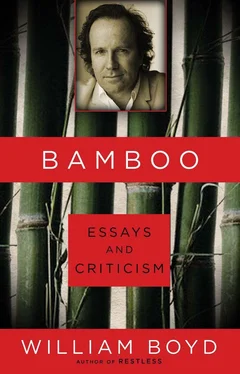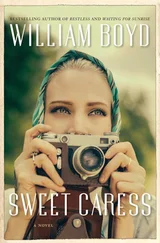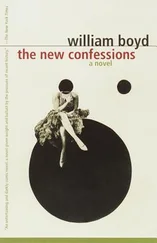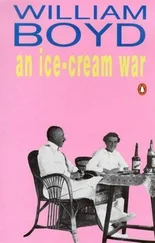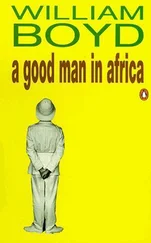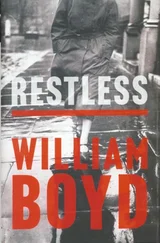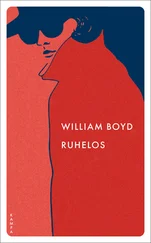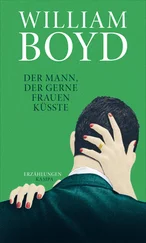Yates in his middle age wound up in Boston, living in a bleak, roach-infested apartment with just enough money to feed himself in an Irish pub up the block. He looked like a derelict with a crusted beard, greasy clothes, muttering to himself as he trudged between his apartment and the bar. What sustained Yates — what kept him alive, I suppose — was his romantic vision of himself as an artist. He wrote all the time, even if what he wrote was inferior stuff, and pursued his vocation with a dedication that is in the end amazingly impressive, even if it was self-delusory. A friend described him as “fun to be around but a pain in the ass.”
Unfortunately, as his life spiralled downwards the “pain in the ass” aspects seemed to dominate. Yates was both bitter and aggressive, his moods swung violently because of his bipolar disorder and the vast amounts of alcohol he consumed. He fought with friends and his family; through his drink-driven dementia he made a regular public spectacle of himself and was in and out of mental institutions. But it was, so his doctors claimed and pleaded with him, his refusal to give up alcohol that was destroying his life. Eventually, however, it was his manic smoking that killed him. In the early 1990s Yates wound up teaching creative writing at a university in Alabama. Virtually immobile owing to his chronic emphysema, he became a familiar figure driving around campus in a clapped-out Mazda alternately puffing on a cigarette and clamping an oxygen mask to his face. He quit smoking a few months before he died and was astonished at how easy it was to give up. By then it was too late: he was rushed into hospital for a routine operation on an inguinal hernia (caused by his fits of coughing) and died alone in the night, asphyxiated by his own vomit. It was 1992: he was sixty-six years old.
“To write so well and be forgotten is a terrifying legacy,” a critic commented posthumously. Yates was a fine writer, but the very uneven quality of his work will always have him categorized as a minor twentieth-century American novelist despite the tremendous debut he made with Revolutionary Road. However, in a curious way, his hellish life itself may be what he will be remembered for. Blake Bailey has written a fully documented, wonderfully clear-eyed, shrewd and sympathetic account of what must be one of the most nightmarish journeys across this vale of tears that any novelist has undertaken. Yates’s battered, wheezing, ascetic indefatigability is almost heroic but, as with many artists who embark on this kind of slow suicide, one is left with the feeling that at root it is caused by an innate sense of the limits of their talent — by their awareness of just how far they fall short of the genuinely great — that sends them down the slippery slope to their own self-destruction.
2004
In my late teens I decided that I wanted to go to art school and become a painter. I was good at art, I took my A-level a year early and, to be honest, at that stage of my education I was more enthused about art than I was by literature. This was not to be: my father’s implacable objection to this plan provoked no rebellion in me and so I decided to follow the path of literature instead, a calling about which he was marginally less disparaging. Decades on, I have to concede that perhaps he was right to dissuade me. But, all the same, my old ambition still nags at me from time to time. It was Karen Wright, editor of Modern Painters magazine, who in 1998 unwittingly re-opened this small Pandora’s box when she asked me to write for her journal and then, a little while later, invited me to join its editorial board .
Suddenly, I had a toe in the world I had hankered to belong to as a schoolboy and I found that, even if I couldn’t be a painter, at least I was happy to write about art. It was not a difficult compromise .
Most of the pieces I have written for Modern Painters and other magazines and newspapers have been largely about British painting, post World War Two. I am no expert in the fine art, scholarly sense, but I feel British painters of that era are both underestimated and undervalued. I was more than prepared to try and boost reputations unjustly in decline .
The other feature of my connection to Modern Painters was that it provided me with the opportunity to invent my fictitious American painter Nat Tate (see pages 306–8) who, for about a week or ten days in 1998, enjoyed a certain notoriety on both sides of the Atlantic, as indeed did I, as the perceived perpetrator of a hoax on the New York art world. Nat Tate seemed to have a strange half-life for a while (I was interviewed on Newsnight about his work and there was a Channel 4 documentary made about him) and his réclame still rumbles on. Most interestingly for me, however, is that Nat’s curious existence has returned me, if not to painting, then to drawing again: from time to time I discover a “lost” Nat Tate and give it to a friend as a present. I am Nat’s only begetter, after all, and also the source of all his surviving art: perhaps the old ambition has been lying dormant all these years and may be beginning to stir again .
Georg Grosz(Review of World War One and the Weimar Artists by Matthias Eberle)
It is hard to gauge now — in this era of outrage and daily disaster — what the effects of the sinking of the Titanic were on the popular imagination in 1912. Was it simply one of shock and blank astonishment? Or did it give rise to darker premonitions? Matthias Eberle suggests, in this very intriguing if somewhat earnest book, that — certainly as far as German artists were concerned — it was a seminal date, the beginning of a process of profound suspicion and disenchantment with the mechanized forces of industry that reached its apotheosis in the 1914–18 war. That fervid exultation in dynamism and the heroic potential of mechanics so eagerly celebrated by the Futurists and, one suspects, by the world at large as well as the German artists, received its gory comeuppance on the Western Front. The fragility of the human body and the transience and futility of human aspirations were all too cruelly exposed when the machines they were pitted against took the form of trench mortars and howitzers.
No one was better placed to observe this than Otto Dix, a machine-gunner on the Western Front who no doubt on many occasions had the opportunity to observe at first hand the effect of high technology on the lumbering Tommies slogging across the mud. Dix had joined the war full of sub-Nietzschean enthusiasm for the fight. He was swiftly disillusioned and that disillusion manifested itself in his art. The same bitterness occurred in other German artists in a curious unity of vision which was called — in opposition to Expressionist and Futurist excesses — the Neue Sachlichkeit , the “New Objectivity.” Dix, Grosz and Beckmann are the most famous exemplars of the grouping and each is the subject of an essay in this book. Dix and Grosz are the most commonly linked and I suppose the most well known, but one of the bonuses of this book was to discover that the same strains in Dix and Grosz appear in Max Beckmann’s work. Indeed there are stronger parallels between Dix and Beckmann than one might have surmised. Each was influenced by Nietzsche, each saw active service and their war experiences produced in them tortured, morbid obsessions with sex, human cruelty and vague religious impulses. Grosz’s work exhibited similar tendencies but, interestingly, it was not produced by a spell at the front. Grosz was first declared unfit for military service. Later he was conscripted, but after a nervous breakdown of sorts he was sent to a sanatorium. A medical student, who thought he was perfectly fit, ordered him out of bed. In a fury, Grosz attacked him and was promptly beaten up by the other patients with, by all accounts, considerable glee. It was this trauma which accelerated his acerbic cynicism, not any spectacle of mass destruction.
Читать дальше
